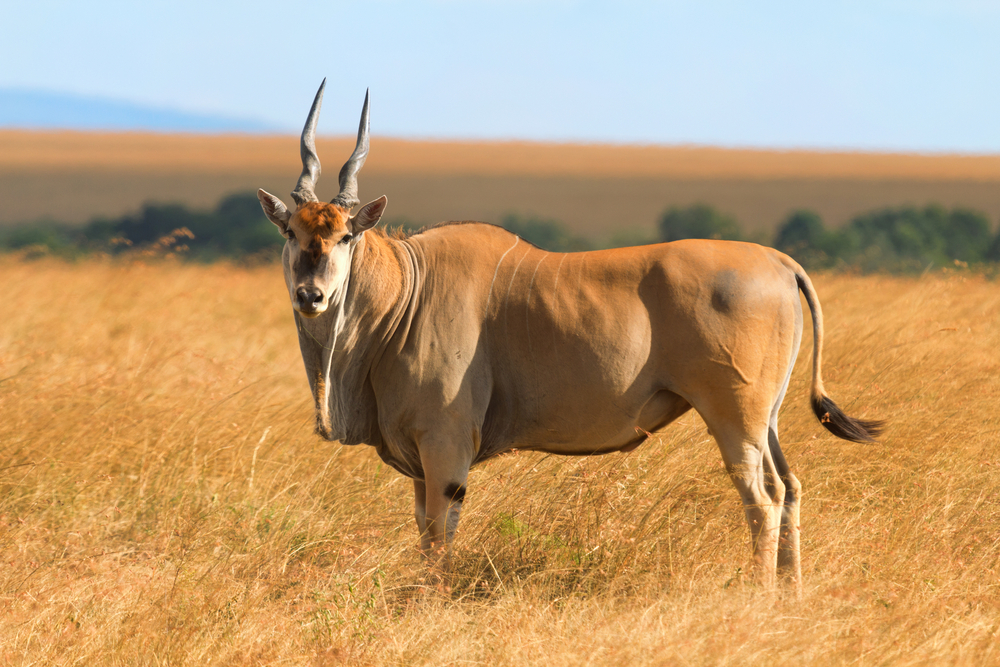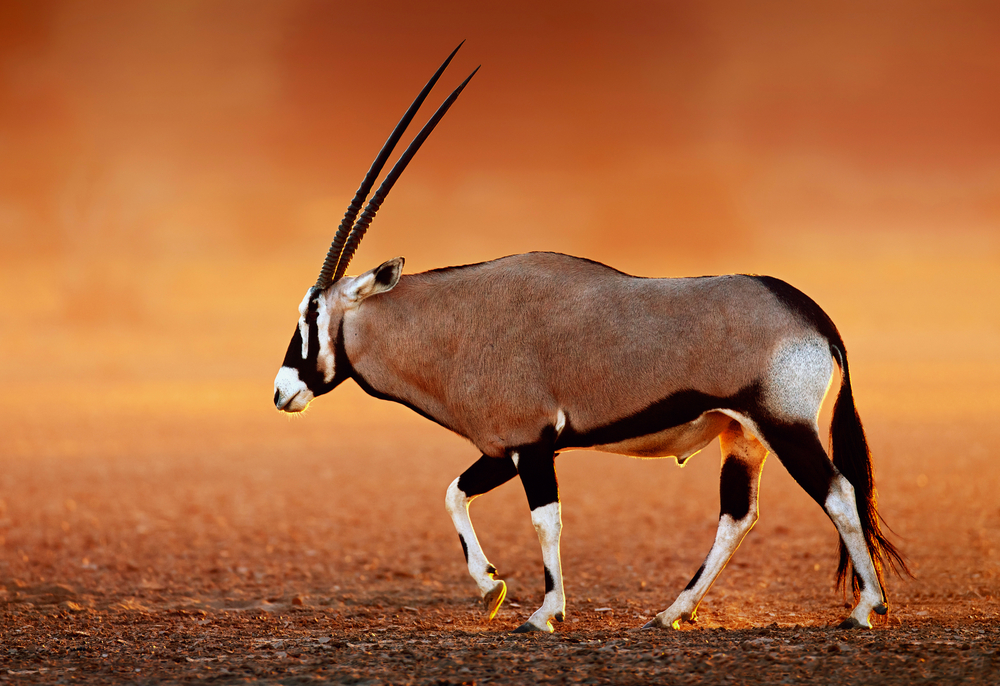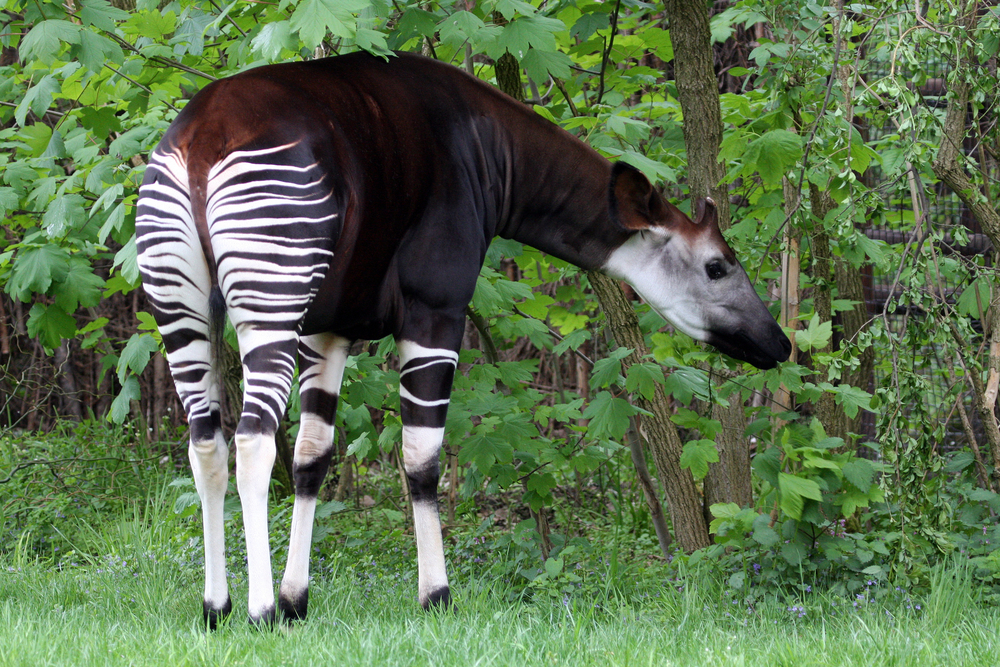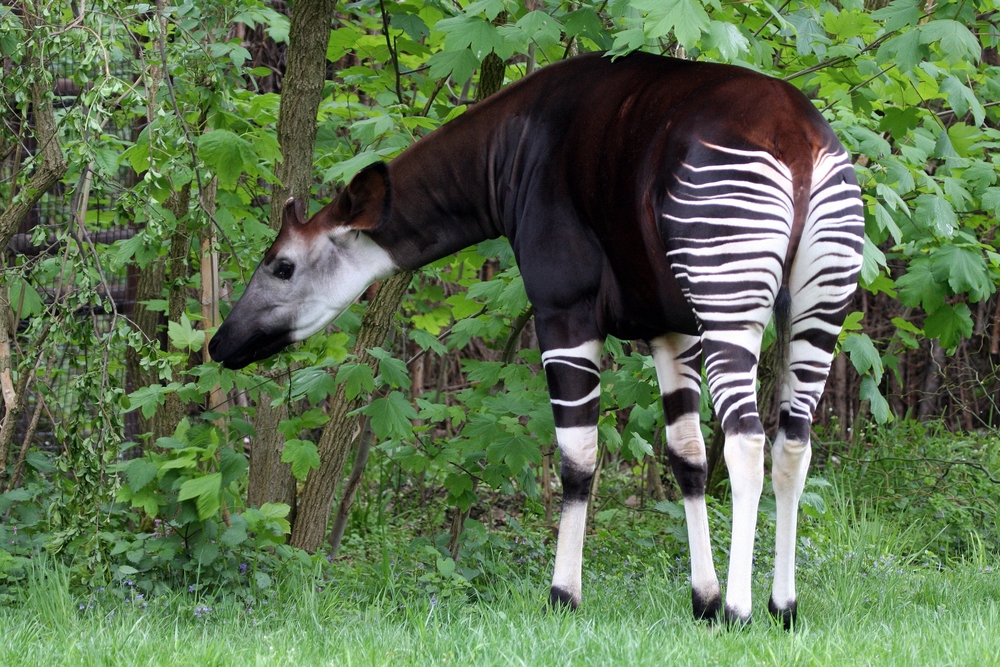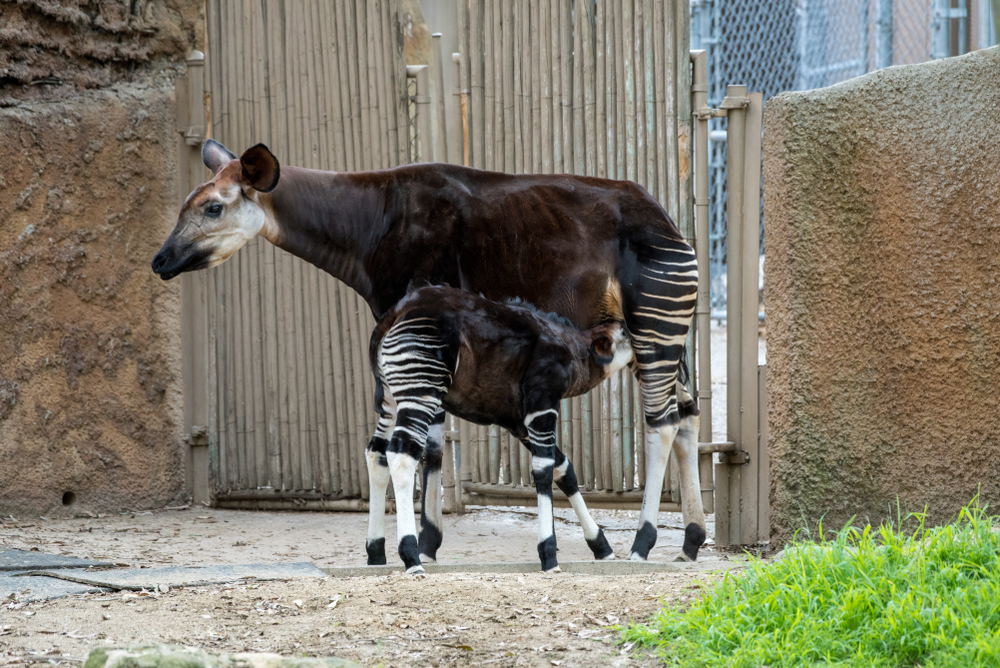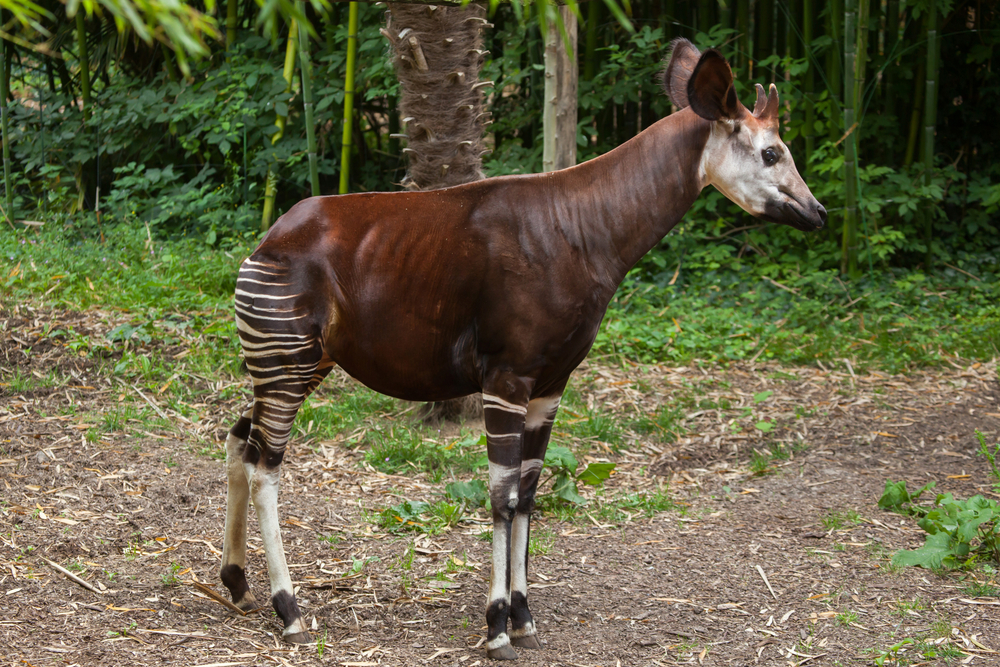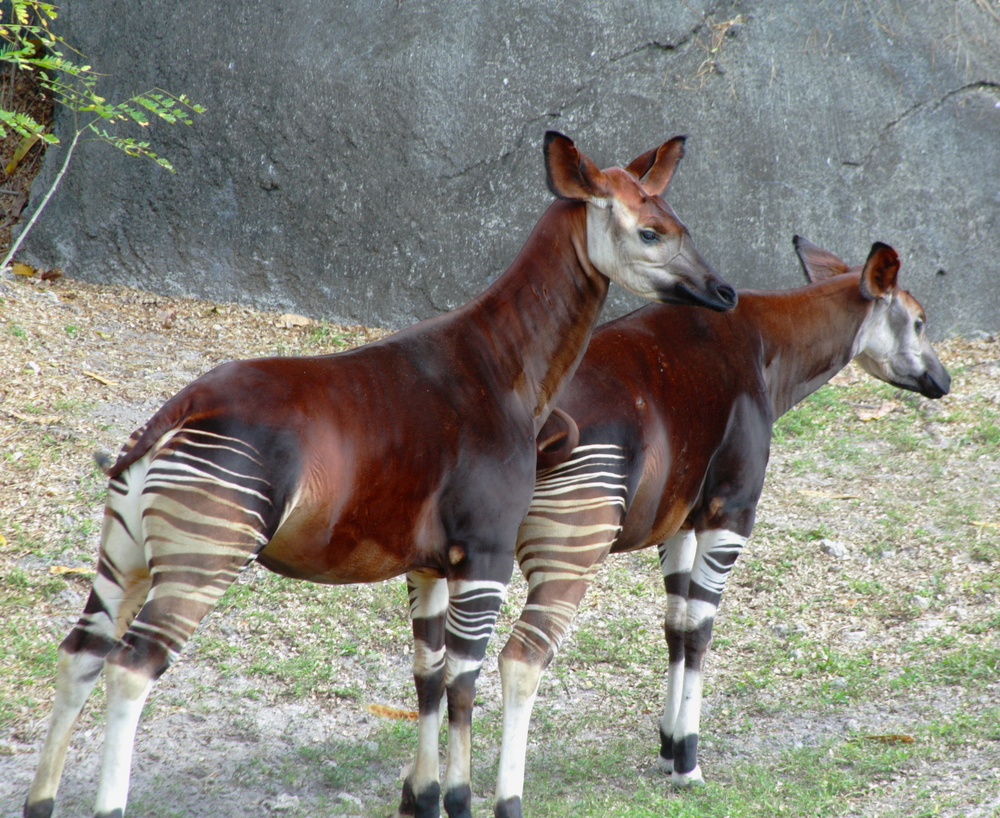Okapis are distinct from other antelope species in several ways due to their specialized adaptations and unique features:
- Habitat: Unlike many antelope species that inhabit a variety of ecosystems, Okapis are exclusively found in the dense rainforests of the Democratic Republic of Congo. Their habitat specialization sets them apart.
- Body Shape: Okapis have a relatively short, stocky body with a deep chest and long neck, which is in contrast to the slender and more streamlined body shape of many other antelope species adapted for open grassland habitats.
- Coat Pattern: The Okapi’s coat is strikingly different from other antelope. It features horizontal white stripes on its legs and hindquarters, resembling those of a zebra. No other antelope species display this pattern.
- Feeding Behavior: Okapis are primarily browsers, feeding on leaves, shoots, fruits, and vegetation found in the rainforest canopy. In contrast, many other antelope species are grazers, primarily consuming grasses and herbs from open landscapes.
- Gestation Period: Okapis have one of the longest gestation periods among terrestrial mammals, lasting approximately 14 to 15 months. This extended pregnancy is unique among antelope and is adapted to the challenges of rainforest life.
- Closest Relative to Giraffes: Okapis are the closest living relatives of giraffes, belonging to the same family, Giraffidae. While giraffes have distinctive long necks and towering height, Okapis have shorter necks and a significantly smaller stature.
- Behavior and Elusiveness: Okapis are known for their elusive and secretive nature, making them rarely seen in the wild. They tend to avoid human presence and are solitary in their feeding and movements, which differs from the social behavior of many other antelope species.
- Habitat Threats: The primary threats to Okapis include habitat loss and degradation due to deforestation, logging, and human activities in the rainforest. Many other antelope species face different threats based on their habitats.
- Conservation Status: Okapis are listed as Endangered on the IUCN Red List due to population declines driven by habitat loss and poaching. Other antelope species have varying conservation statuses, depending on their population trends and the extent of threats they face.
In summary, Okapis stand out among antelope due to their unique combination of adaptations to the rainforest, distinctive coat pattern, and their role as the closest living relatives of giraffes. Their specialized lifestyle and habitat preferences make them a captivating and enigmatic species in the world of antelope.

































































